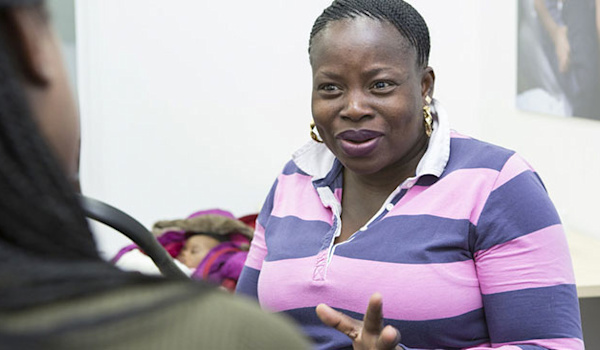Health and safety standards for rented homes (HHSRS)
You can ask your council to check your home if you think it has hazards and is not safe.
The hazards could be things like:
damp and mould
faulty plug sockets or wiring
if your home is dangerously cold or hot
Councils use the Housing Health and Safety Rating System (HHSRS) to check for hazards in homes.
The check is done by an environmental health officer from your council.
What the council must do
The council must take action if they find serious problems.
The action could be:
talking with your landlord to fix problems
taking legal action against the landlord
Which homes are covered by the HHSRS?
The council must monitor housing conditions in the area.
This includes:
private rented properties,
council and housing association homes
owner occupied housing
If you're a council or housing association tenant, environmental health might tell you to complain directly to your landlord about repairs and poor conditions.
How to get a check done
Most councils have a private rented housing team. Contact them first if you rent privately.
The private housing team can ask environmental health to check your home.
What happens at the check
You need to be home or have someone there to let the environmental health officer in.
The council might tell your landlord that they are going to do a check. Your landlord can be there but they need your permission to come into your home.
The council officer looks at the property.
They do not always find the cause of problems during the check. They might need a specialist report.
For example, there could be a damp problem but the person doing the check will not remove floorboards or plaster to look at the cause.
They could tell your landlord to pay for a specialist damp report instead.
How hazards are checked
The council works out if there's a risk of harm because of hazards in your home.
They look at:
the chance of harm
how serious it would be
any extra risk to children or older people
The hazards in your home are then rated as 'category 1' or 'category 2'.
Category 1 hazards are more serious and the council must take action.
They can take action on category 2 hazards if they choose to.
What the council does next
Environmental health could try to work with your landlord.
If your landlord will not fix things
Your council could take legal action if your landlord does not make your home safe.
They could:
give your landlord a notice to fix things
do the repairs and make your landlord pay for them
Hazard awareness notice
This notice says what the hazards are and tells the landlord how to fix things. It does not say how long the repairs should take.
The hazards awareness notice is often used for category 2 hazards.
But it is sometimes used for category 1 hazards.
For example, if:
the landlord agrees to take quick action
there's no one vulnerable living in your home
You might need to contact environmental health again if your landlord ignores the notice, especially if there are still category 1 hazards in your home.
Improvement notice
This notice must:
say what the hazards are and what is causing them
tell the landlord how to fix things
give start and finish dates for work
The earliest start date will be 4 weeks after your landlord gets the improvement notice.
Improvement notices are often used for category 1 hazards but can sometimes be used for category 2 hazards.
Your landlord cannot usually give you a section 21 notice for 6 months if they get an improvement notice.
Putting a notice on hold
Sometimes, the council puts an improvement notice on hold. For example, if it is a student house and repairs can be done over the summer when the property is empty.
Your landlord can give you a section 21 eviction notice if the improvement notice is on hold.
Emergency remedial action
Emergency remedial action means the council does the repair work and charges the landlord.
They only do this if there's a good chance that someone in your home will suffer serious harm in the near future.
The council must give the landlord an emergency remedial action notice within 7 days of starting the work.
You also get a copy.
Your landlord cannot usually give you a section 21 notice for 6 months if the council takes this action.
Prohibition order
A prohibition order can:
stop people living in all or part of the building
limit the number of people who live there
Prohibition orders are sometimes used in overcrowded properties or where repairs cannot be done while you're living there.
A prohibition order usually starts after 4 weeks but the council might decide to put it on hold if no one vulnerable lives in your home.
In extreme cases, the council can make an emergency prohibition order which starts straight away.
Contact a Shelter adviser if you're asked to leave your home because of a prohibition order.
If the council does not check your home or take action
You can complain if you do not think the council has dealt with your problem properly.
Ask for a copy of their:
housing enforcement policy
complaints procedure
Check the council has done what their housing enforcement policy says. If they have not, you can complain.
Find your council's complaints department on GOV.UK
If you're not happy with the council's response to your complaint, you can complain to the Local Government & Social Care Ombudsman.
You could also contact your local councillor or MP.
New rules for serious problems in council and housing association homes
From 27 October 2025 your council or housing association must make your home safe in:
An emergency hazard is a problem that can cause you or someone you live with serious harm if it's not fixed in 24 hours.
Last updated: 27 October 2025

